The PTPN2 rs1893217 IBD risk allele increases susceptibility to AIEC invasion by a JAK-STAT-CEACAM6 axis
- PMID: 40624731
- PMCID: PMC12239772
- DOI: 10.1080/19490976.2025.2526136
The PTPN2 rs1893217 IBD risk allele increases susceptibility to AIEC invasion by a JAK-STAT-CEACAM6 axis
Abstract
Inflammatory bowel disease (IBD) patients often exhibit expansion of the gut pathobiont, adherent-invasive E. coli (AIEC). Loss of activity of the IBD susceptibility gene, protein tyrosine phosphatase type 2 (PTPN2), causes gut microbiota dysbiosis in IBD patients, while Ptpn2 knock-out (Ptpn2-KO) mice display AIEC expansion. CEACAM6, a host cell surface glycoprotein, is exploited by AIEC to attach to and enter intestinal epithelial cells (IECs). Here, we investigated how IEC-specific PTPN2 restricts AIEC invasion. Intestinal biopsies from IBD patients heterozygous (CT) or homozygous (CC) for the PTPN2 SNP (single nucleotide polymorphism) rs1893217 were stained for CEACAM6. HT-29 IECs were transfected with control shRNA (PTPN2-CTL), or a shRNA targeted toward PTPN2 (PTPN2-KD). The rs1893217 SNP was inserted (PTPN2-KI), or a complete knock-out of PTPN2 (PTPN2-KO) was generated, by CRISPR-Cas9 gene editing of Caco-2BBe IECs. Adherence and invasion assays were performed with either the human IBD AIEC isolate, LF82, or a novel fluorescent-tagged mouse adherent-invasive E. coli (mAIECred). IL-6 and the pan-JAK inhibitor tofacitinib were administered to interrogate JAK-STAT signaling. Protein expression was determined by western blotting and densitometry. CEACAM6 expression was elevated in IBD patients carrying the PTPN2 rs1893217 SNP (CT, CC) compared to wildtype (TT) IBD patients. HT-29 and Caco-2BBe cell lines deficient in PTPN2 expressed significantly higher levels of CEACAM6. Further, PTPN2-KI and PTPN2-KO cell lines displayed greater invasion by LF82 and mAIECred. CEACAM6 was further elevated by IL-6 in PTPN2-deficient IECs vs. untreated controls. STAT1 and 3 silencing partially reduced CEACAM6 protein expression. Tofacitinib significantly reduced the elevated CEACAM6 protein expression and the higher AIEC adherence and invasion in PTPN2-KI and PTPN2-KO IECs. Our findings highlight a crucial role for PTPN2 in restricting pathobiont entry into host cells and suggest a role for JAK-inhibitors in mitigating AIEC colonization in IBD-susceptible hosts.
Keywords: AIEC; IBD; JAK-STAT; LF82; gut barrier; tofacitinib.
Conflict of interest statement
DFM has received investigator-initiated research awards from the makers of tofacitinib (Pfizer Inc.) through the ASPIRE-Pfizer JAK-STAT in IBD Research Program for studies unrelated to the content of this manuscript. All other authors had no conflicts to declare.
Figures

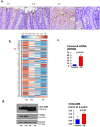
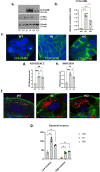

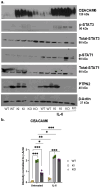

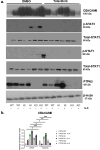
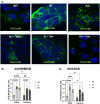
References
MeSH terms
Substances
Grants and funding
LinkOut - more resources
Full Text Sources
Research Materials
Miscellaneous
